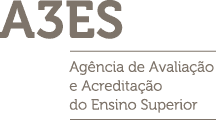Programme Structure for 2025/2026
| Curricular Courses | Credits | |
|---|---|---|
| 1st Year | ||
|
Financial Accounting for Decision-Making
6.0 ECTS
|
||
|
Corporate Financial Strategy
6.0 ECTS
|
||
|
Strategy and Corporate Development
6.0 ECTS
|
||
|
Data Analysis Applied to Management
6.0 ECTS
|
||
|
Data Analysis Applied to Management
6.0 ECTS
|
||
|
Research Seminar in Management
6.0 ECTS
|
||
|
Strategic Human Resource Management
6.0 ECTS
|
||
|
Planning and Marketing Innovation
6.0 ECTS
|
||
|
Logistics and Supply Chain Management
6.0 ECTS
|
||
|
Logistics and Supply Chain Management
6.0 ECTS
|
||
| 2nd Year | ||
|
Master Dissertation in Management
30.0 ECTS
|
||
|
Master Project in Management
30.0 ECTS
|
Recommended optative
Objectives
The Master's in Management provides comprehensive and rigorous training, preparing students to face complex challenges in the global business world. Throughout the course, students develop advanced analytical and quantitative skills, which are fundamental for making informed, data-driven strategic decisions.
The programme fosters critical thinking and problem-solving skills, preparing students to lead and innovate in dynamic environments. The international component of the course provides an in-depth understanding of global markets, the digitalisation of business and corporate sustainability.
Effective communication and negotiation skills are key competences developed, enabling students to convey ideas and solutions clearly and persuasively. The course also encourages involvement in applied research projects, promoting the use of advanced methodologies for analysing management problems.
Ethical training and social responsibility are fundamental pillars of the programme, preparing students for responsible and sustainable leadership. In addition, the master's programme promotes a mindset of continuous learning, flexibility and adaptation, essential for thriving in a constantly evolving business environment.
This set of objectives aims to train highly qualified managers capable of generating a positive impact on organisations and society.
By the end of the program, the students in the Master in Management will have gained the following competencies and reached the following learning objectives:
1) Competence in producing written communication in business environments with impact and effectiveness, namely:
1.1) Produce a well-structured written document
1.2) Clearly identify and communicate the relevant key messages within a written document
1.3) Clearly express the link between theoretical arguments and specific practical issues within a written document
1.4) Effectively summarize ideas and conclusions within a written document
2) Competence in delivering oral communication in a business environment with impact and effectiveness, namely:
2.1) Select the appropriate format for a given presentation
2.2) Demonstrate confidence that the communication was well-prepared
2.3) Develop and make presentations with impact
3) Competence in ethical behavior, responsibility, and sustainability, namely:
3.1) Identify and discuss the myriad challenges surrounding corporate responsibility and/or sustainability
3.2) Recognize and critically reflect on ethical dilemmas
4) Competence in Thinking critically about topics, namely:
4.1) Select and interpret relevant data and references from academic and non-academic sources
4.2) Analyse issues effectively, leading to the formulation of well-supported conclusions or solutions
5) Competence in teamwork and interpersonal dealing, namely:
5.1) Organize and allocate tasks among group members to meet goals in an efficient and effective manner
5.2) Show a willingness to listen to others and exhibit curiosity about what people are saying and experiencing
5.3) Schedule tasks to meet milestones deadlines
6) Competence in Management, namely:
6.1) Evaluate the role of strategy and strategic management in companies based on foundational principles of business strategy
6.2) Analyze the role of finance, marketing, and logistics in the strategic process to develop an integrated and holistic perspective of business strategy
6.3) Examine HR practices and their effectiveness in different strategic contexts
6.4) Analyze the financial statements of companies to assess the impact of financial transactions
6.5) Apply appropriate data analysis methods and tools to solve business-related problems and interpret their implications.


